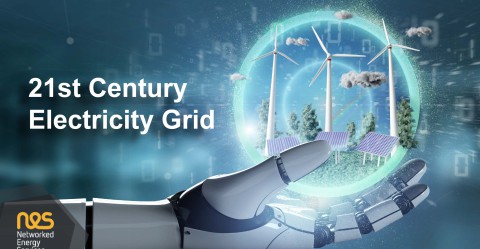
21st Century Electricity Grid
Apr 06, 2022Managing the distribution grid in the 21st century requires monitoring electricity and the equipment that provides and supports its delivery to millions of metering points. Moreover, the need for distribution grid management is greatly increased by the potential for widespread adoption of residential and commercial solar systems, PEVs and other distributed energy resources. The digital electricity grid network required to support this must have the bandwidth, embedded sensing, local intelligence and control, software, both distributed and centralized, to collect, organize, and analyze an immense volume of information.
This requires two-way communications to enable real-time and near real-time data and detected events (such as load and congestion, system stability, equipment health and outages) to be exchanged between a head-end system and the appropriate grid devices in order to respond and address events and changing conditions both grid-wide and locally, to maximize and improve efficiency and reliability.
This requires an integrated implementation strategy that adheres to a common infrastructure model, since an incremental and disconnected approach would be too costly and ineffective. The smart metering and smart grid solution must make it easier to adopt new technologies, devices, and systems, allowing utilities to take advantage of improvements in storage, micro-grids and distributed generation, as well as adapting to other energy transformations in the future.
The solution will need to support local intelligence that provides autonomous, decision making controls as well as centralized notifications, overrides, and inputs with situational awareness from multiple sources. The autonomous operations of the devices will need to consider factors, such as customer preferences and actions, equipment operating parameters, equipment failures, energy usage, and other grid activities.
The NES solution provides a digital grid transformation platform that addresses these needs by offering an end-to-end digital grid system to support an energy evolution, where information and automation enables customers and companies to work together to keep energy affordable, reliable and clean.
The solution embeds two-way communications within the electric grid and offers local intelligence about the low voltage network. Without this digital technology and local intelligence, sustainable energy efficiency is difficult to achieve. However, with the proper solution, utilities can create a sustainable energy future that allows them to meet their customers’ energy needs in a reliable, affordable, and environmentally sound manner.
Author:
Larry Colton - Director of International Business Development and Government Affairs at NES




